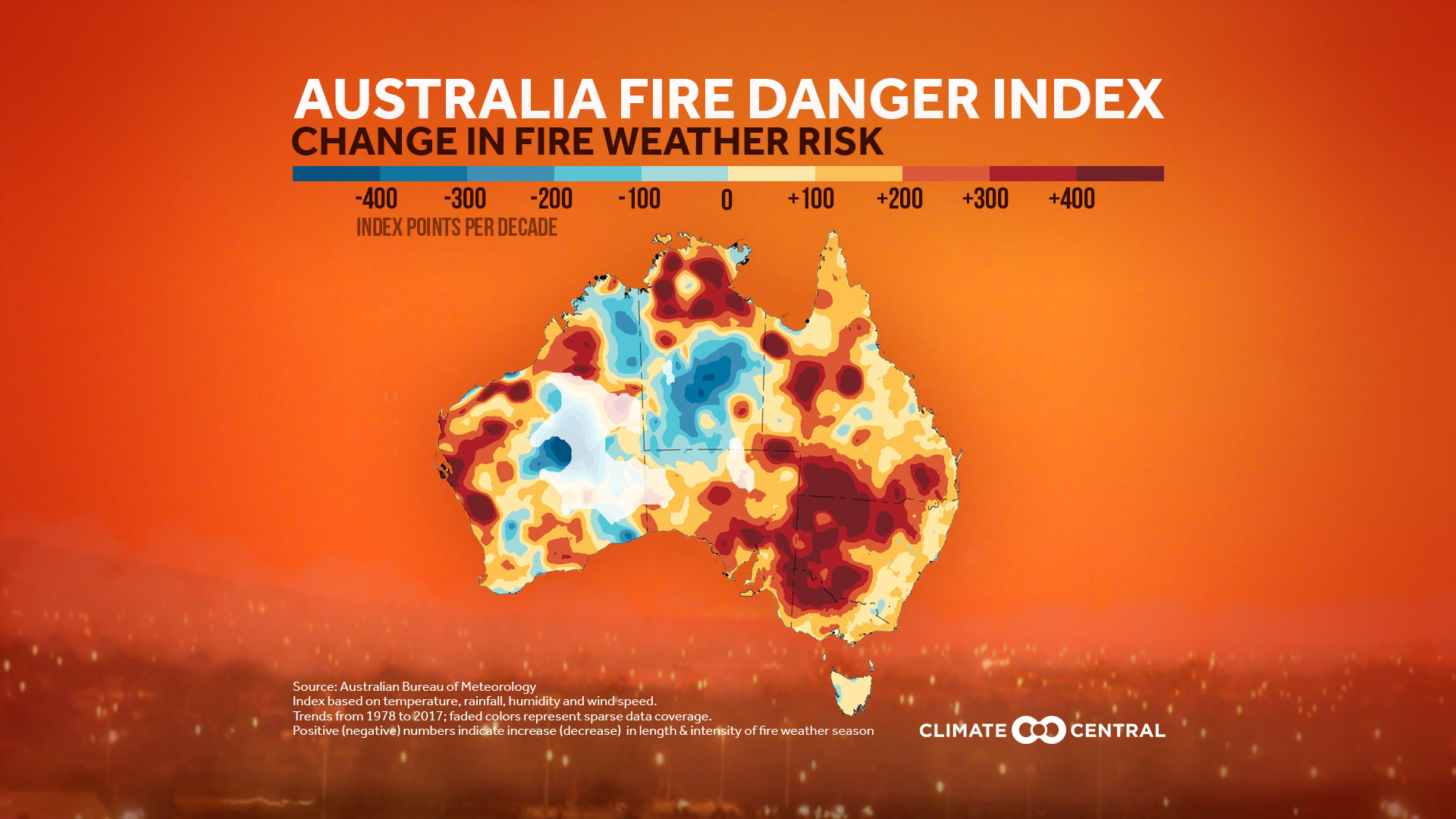With title:JPG • PNG| No Title:JPG • PNG
So far this Australian fire season, more than 15 million acres have burned, which equals roughly the size of the state of West Virginia. For perspective, this is dramatically larger than the area burned during the past two years of fires in California--2018 (1.96 million acres) and 2019 (260,000 acres). The Australian state of New South Wales, home of Sydney, has more than 100 active fires.
THE CLIMATE CHANGE ROLE
There has been a long‑term increase in both extreme fire weather and the length of the fire season across large parts of Australia
Although there is year-to-year variability in the fire risk (via ENSO, Indian Ocean Dipole, and Southern Annular Mode), climate change is producing more dangerous long-term conditions for bushfires
Observations indicate an earlier start of the fire season, particularly in parts of southern and eastern Australia, where the population is highest
Fire risk will continue to increase as greenhouse gas emissions cause further warming
KEY STATISTICS
Last month was the driest and hottest December on record in Australia; December average temperature was 5.8°F (3.2°C) above average
2019 was the hottest and driest year on record in Australia (100+ years of records)
The hottest two days on record for the country came during this stretch: a record nationwide average of 105.6°F on December 17 was broken the very next day at 107.4°F
The monthly averaged Australian Forest Fire Danger Index in December was the highest on record for most of the country
With title:JPG • PNG| No Title:JPG • PNG
RESOURCES
Bushfires and Climate Change in Australa - a plain-language summary from the Australian National Environmental Science Program
Australia’s 2019 State of the Climate from the Commonwealth Scientific and Industrial Research Organisation (CSIRO) and the Bureau of Meteorology (BOM)
Climate impact analysis of 2018 Queensland fire weather from the BAMS report Explaining Extreme Events of 2018
Australian climate summaries archive from BOM
SciLine - a service of AAAS that can put you in contact with scientists with expertise in the relationship between wildfires and climate change
Watch and share this animation on YouTube from the Australian National University - Correlation of southern Australian temperature and precipitation with wildfires exceeding one million acres
INTERVIEW OPPORTUNITIES - SCIENTISTS DOWN UNDER
Dr. Nerilie Abram
ARC Future Fellow, Research School of Earth Sciences and ARC Centre of Excellence for Climate Extremes, The Australian National University
nerilie.abram@anu.edu.au
https://twitter.com/dr_nerilie
Dr. Michael Mann
Distinguished Professor of Atmospheric Science, Director, Earth System Science Center, Pennsylvania State University
mann@psu.edu
https://twitter.com/MichaelEMann
Currently on sabbatical in Sydney
